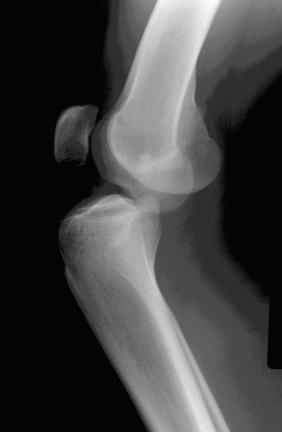Physical Address
304 North Cardinal St.
Dorchester Center, MA 02124
The concept of a dislocated knee has changed markedly over the past few decades. In 1971, Meyers and Harvey predicted that most orthopedists would not see more than one knee dislocation in their entire career. However, evidence indicates that knee dislocations are being seen with increasing frequency for a variety of reasons. Increasing trauma, the growing epidemic of obesity, changes in automotive design, and recognition of spontaneously reduced knee dislocations have all added to the increased incidence. The increasing number of knee dislocations has created the need for a classification system that will help guide the management of these complex injuries. Classification systems should be simple and reproducible, provide information to the clinician that will be helpful in making treatment decisions, aid in the communication of similar injuries, and assist in developing prognoses for the injuries. This chapter reviews the shortcomings of older classification systems of knee dislocations and presents an anatomic classification that is simple, accurate, reproducible, and useful.
Clinicians must be alert to the presence of “reduced” dislocations so as not to miss a limb-threatening arterial injury.
Although rare, cruciate-intact knee dislocations do occur, adding to the stability of the knee and changing the management of these injuries.
A classification system for knee dislocations must take into account the presence of both reduced and cruciate-intact knee dislocations.
Classically, a knee dislocation was defined as greater than 100% displacement of the tibiofemoral articulation. This displacement had to be present on either physical examination or on radiographic imaging. Since the 1990s, several authors have recognized the existence of reduced knee dislocations. These are knees that present to the treating physician as reduced but have multiple injured ligaments (usually including both cruciate ligaments) and gross instability on stress testing. Some of these injuries represent a spontaneous reduction of a knee dislocation and others are dislocated knees that are reduced in the field before transport to a medical facility. The incidence of this type of reduced knee dislocation may be as high as 50% of all knee injuries classified as a dislocation. A study from our institution showed that the incidence of vascular injury in reduced dislocations was equal to that of knees that presented as dislocated ( Fig. 21-1 ). Recent studies have shown the risk of arterial injury ranges from 3% to 43% in knees diagnosed as dislocated. Clinicians must be alert to the presence of reduced dislocations so as not to miss a limb-threatening arterial injury. A multiligament-injured knee with gross instability must be treated the same as a knee that presents as dislocated.
![FIG 21-1, Bilateral knee injuries, both classified as dislocation, presenting in the same patient. A, A lateral radiograph of the right knee demonstrates an anterior dislocation. On examination, the patient was noted to have sustained an anterior cruciate ligament/posterior cruciate ligament/medial collateral ligament (ACL/PCL/MCL) injury (knee dislocation [KD] III-M). B, An anteroposterior view of the left knee on initial presentation shows the knee is reduced. On physical examination, the injury pattern involved the ACL/PCL/fibular collateral ligament (FCL) (KD III-L-C). C, An arteriogram of the right knee reveals good flow through the popliteal artery. D, An arteriogram of the reduced left knee demonstrates complete occlusion of the left popliteal artery and hence required revascularization. FIG 21-1, Bilateral knee injuries, both classified as dislocation, presenting in the same patient. A, A lateral radiograph of the right knee demonstrates an anterior dislocation. On examination, the patient was noted to have sustained an anterior cruciate ligament/posterior cruciate ligament/medial collateral ligament (ACL/PCL/MCL) injury (knee dislocation [KD] III-M). B, An anteroposterior view of the left knee on initial presentation shows the knee is reduced. On physical examination, the injury pattern involved the ACL/PCL/fibular collateral ligament (FCL) (KD III-L-C). C, An arteriogram of the right knee reveals good flow through the popliteal artery. D, An arteriogram of the reduced left knee demonstrates complete occlusion of the left popliteal artery and hence required revascularization.](https://storage.googleapis.com/dl.dentistrykey.com/clinical/ClassificationofKneeDislocations/0_3s20B9780323329033000214.jpg)
Although most knee dislocations involve tears of both cruciate ligaments (posterior cruciate ligament [PCL] and anterior cruciate ligament [ACL]), case reports of cruciate intact knee dislocations do exist. A PCL-intact knee dislocation was first described in 1975. Some authors have reported on patients with a radiographically documented knee dislocation that, upon reduction, demonstrated an intact, functional cruciate ligament on physical examination or at the time of operative exploration. Although some of these patients were noted to have sustained partial PCL tears, the presence of a functional PCL provides increased stability and changes the management of these PCL-intact dislocations. In most PCL-intact knee dislocations, the tibia is perched anterior on the distal femur ( Fig. 21-2 ). In addition to an ACL tear, there is often complete rupture of either the medial collateral ligament (MCL) or posterolateral structures.

Similarly, ACL-intact knee dislocations have also been reported. These are also extremely rare injuries. The tibia is perched posterior on the femur, and there is a complete tear of the PCL associated with a complete collateral ligament injury. Again, the presence of a functional ACL provides increased stability in the knee and changes the management of these injuries. A classification system for knee dislocations must take into account the presence of both reduced and cruciate-intact knee dislocations.
The position classification system is based on the tibial position with respect to the femur.
Become a Clinical Tree membership for Full access and enjoy Unlimited articles
If you are a member. Log in here